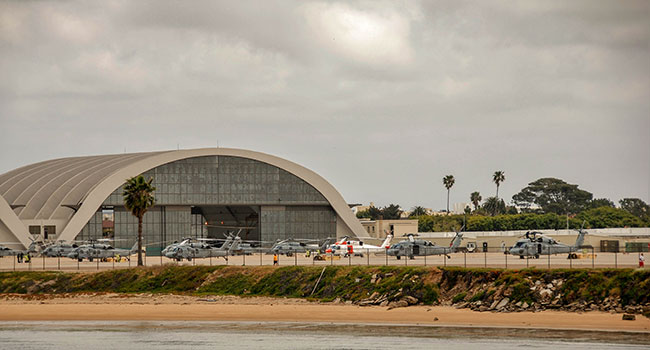
Florida Governor Announces Over $722,000 in Grants to Protect Florida Military Installations
Gov. Ron DeSantis announced that $722,400 was awarded through the Florida Defense Support Task Force (FDSTF) Grant Program to three projects to protect military installations across the state. The award recipients include the Florida Department of Military Affairs, the Bay County Board of County Commissioners and the city of Jacksonville. This grant award, combined with the previous award this fiscal year, results in a $1,447,400 commitment by the FDSTF to Florida’s defense communities.
“Florida is the most military-friendly state in the nation and I’m proud to announce over $722,000 to support community infrastructure projects at Florida military installations,” DeSantis said. “We thank the Florida Defense Support Task Force (FDSTF) for supporting Florida’s military communities and military installation and defense industry, which represents a $95 billion impact to our state.”
“This announcement is great news for Florida,” said Jamal Sowell, Florida Secretary of Commerce and Enterprise Florida President & CEO. “Florida’s military and defense industry is a key economic driver for the state and Enterprise Florida and the FDSTF will continue to create opportunities that support Florida’s military installations and strengthen Florida bases.”
Grant funding will support community projects at Florida military installations that will diversify local economies, provide support for local infrastructure projects and strengthen Florida’s bases ahead of any potential Department of Defense realignment or closure actions. For more information on the individual grant award for projects throughout the state, see below:
Miami-Dade County, $129,000 Defense Grant. Awarded to the Florida Department of Military Affairs for the Florida Army National Guard for encroachment management at Homestead Air Reserve Base. This project will support the construction of a security fence along the perimeter of a 70-acre tract of land contiguous to the base, which will provide a buffer from incompatible land uses on the north side of the base.
“This grant supports the commitment the Florida Department of Military Affairs has made toward the Guard and Reserve mission in the State of Florida, and will allow the Florida National Guard to grow force structure in a key demographic area,” said Maj. Gen. James Eifert, The Adjutant General of the state of Florida. “We are pleased the FDSTF members recognize the value of this partnership and or our military installations.”
Bay County, $270,900 Defense Grant. Awarded to the Bay County Board of County Commissioners to assess critical community infrastructure requirements needed for the rebuilding of Tyndall AFB and the Naval Support Activity Panama City after the impacts of Hurricane Michael. Additionally, these funds will help leverage other local and federal resources that will assist the communities to work collaboratively towards rebuilding and resiliency related to Hurricane Michael and preparations for the next century.
“Bay County’s hurricane recovery efforts are bolstered by this FDSTF partnership to provide funding for infrastructure assessments and mission growth and community partnership opportunities for long term military and defense resiliency,” said Philip “Griff” Griffitts, Chairman of the Bay County Board of County Commissioners.
Duval County: $322,500 Defense Grant. Awarded to the city oåf Jacksonville to protect Naval Bases and installations and promote compatible land use in the Military Influence Zone of Duval County. This grant will help the grantee leverage $1.5 million of Federal Readiness and Environmental Protection Integration (REPI) funds for this project.
“Support from the state of Florida, through the Florida Defense Support Task Force will allow for the City of Jacksonville in partnership with the Navy, to protect the vital military missions of our bases and installations,” said Mayor Lenny Curry, mayor of the city of Jacksonville. “This proactive effort, which could not happen without support from the FDSTF, will ensure that our bases and installations are protected from development that is incompatible with the missions that protect our freedom.”
The Florida Defense Support Task Force was created in 2011 with the mission to make recommendations to preserve and protect military installations, support the state’s position in research and development related to military missions and contracting, and improve the state’s military-friendly environment for service members, military families, veterans and businesses that bring military and defense-related jobs to the state.
The Florida Defense Support Task Force Grant Program is administered by Enterprise Florida, and grants are awarded annually, on a project priority basis. For more information on the Florida Defense Support Task Force, visit www.eflorida.com/floridadefense.